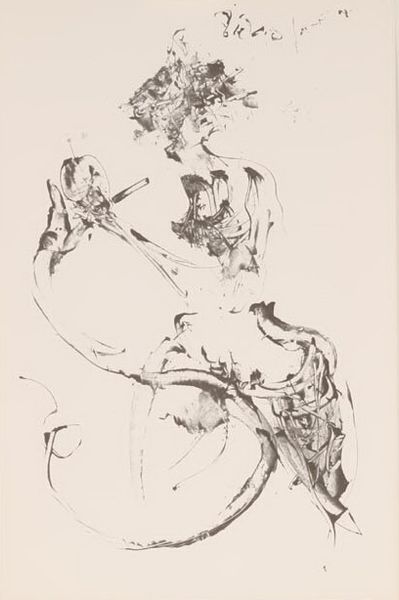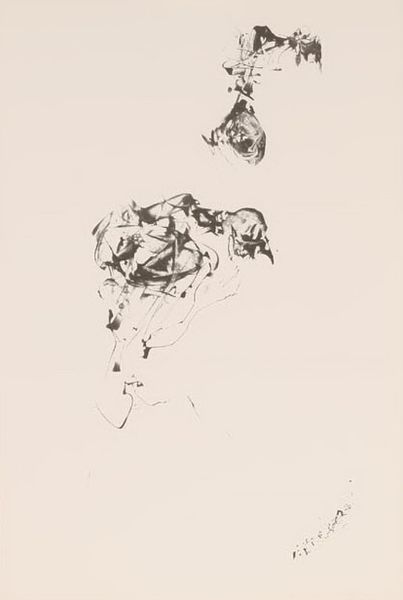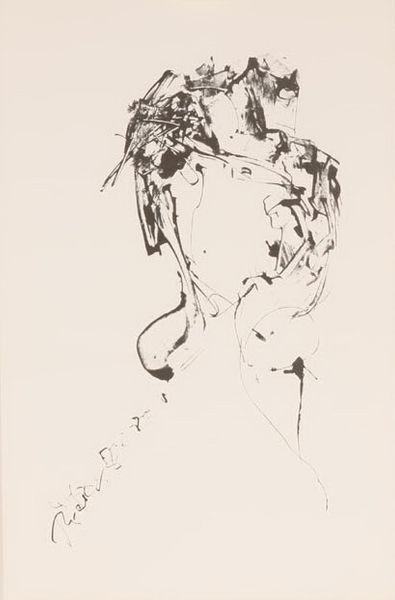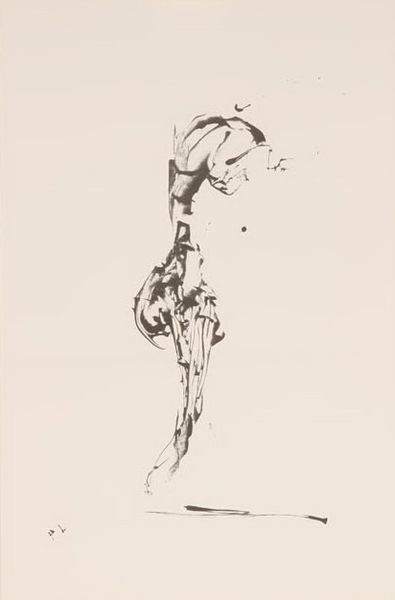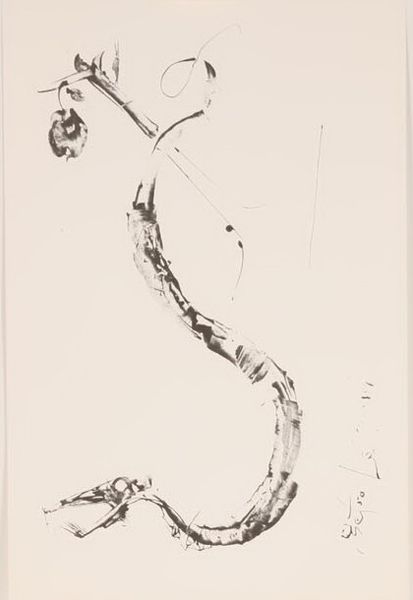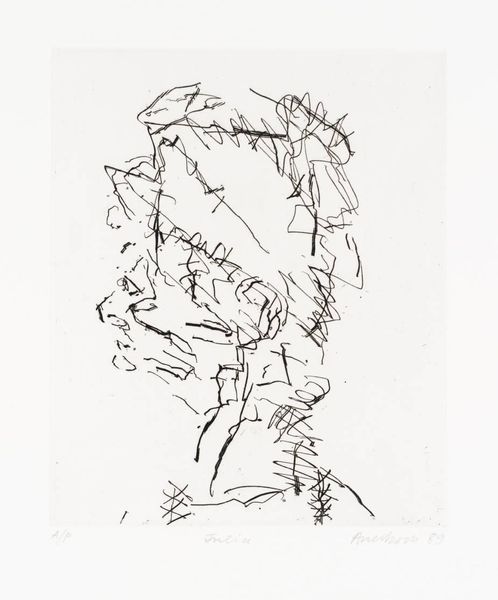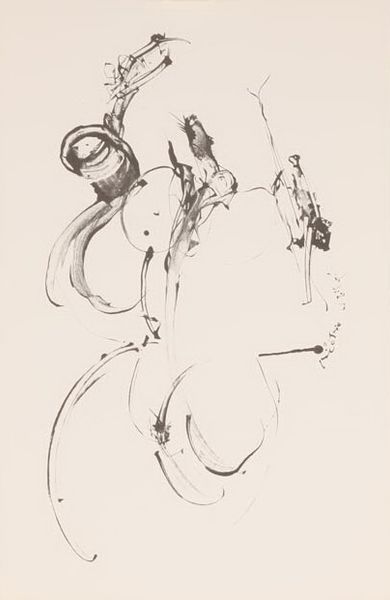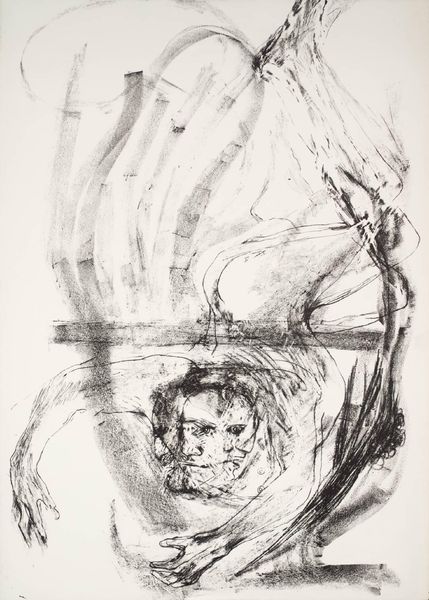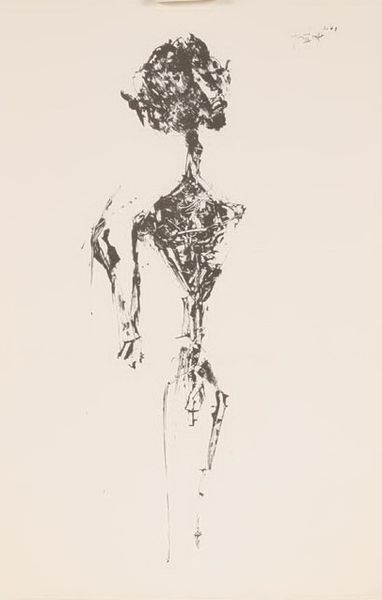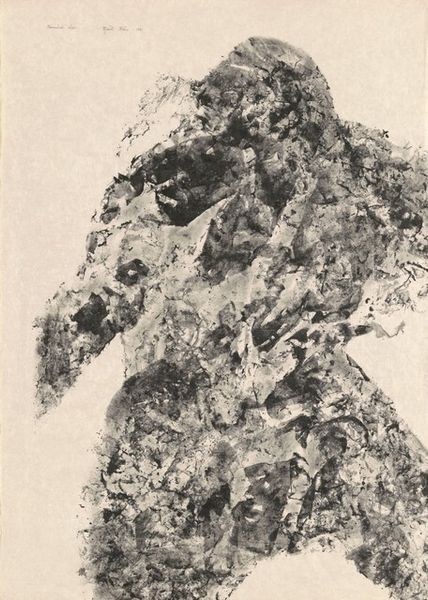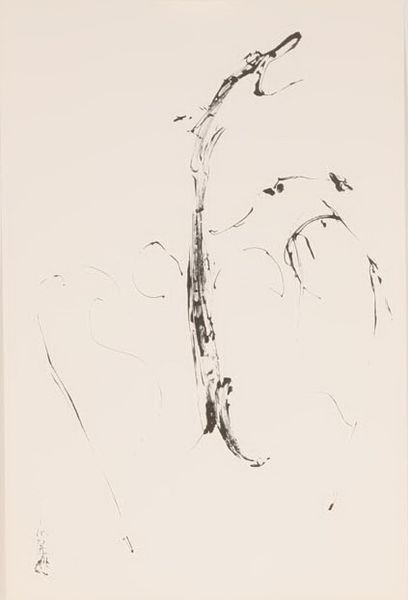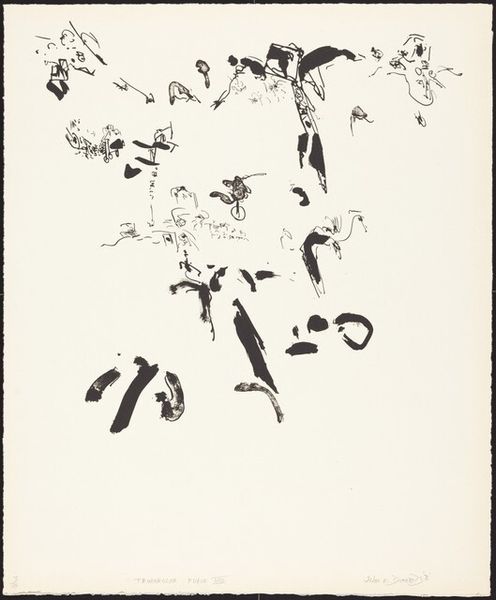
drawing, ink
#
drawing
#
ink drawing
#
figuration
#
ink
#
ink drawing experimentation
#
abstraction
#
line
Copyright: Pietro Lazzari,Fair Use
Editor: This is Pietro Lazzari’s "Adam and Eve (6)," an ink drawing from 1970. The linework is so dynamic; it almost looks like figures emerging from chaos. How do you interpret this work? Curator: The fragmented forms definitely speak to a post-lapsarian state, that moment after the fall. Look at how Lazzari renders the figures – broken, almost skeletal, reflecting a loss of innocence and a separation from a divine whole. Editor: I see what you mean. The way the ink bleeds also hints at a loss of control. Is this a common theme in depictions of Adam and Eve? Curator: Often. Artists explore themes of transgression and mortality. Lazzari adds another layer, suggesting that this biblical event shattered something fundamental in the human psyche, leaving behind fragments we still grapple with. Do you notice the absence of the Garden? Editor: Good point! There’s no Edenic landscape, only the figures themselves against a void. Does this focus amplify the psychological aspect, making it more internal than external? Curator: Precisely. The surrounding blank space is not merely empty; it represents the unknown, the consequences of their choice and the space they now inhabit. We, too, confront this void, interpreting and reinterpreting this scene, trying to give shape to our human condition. Editor: That’s fascinating! I never considered the symbolic weight of empty space before. It makes me think about how much meaning can be conveyed, even through what's not there. Curator: Indeed, every element in an image carries symbolic potential, shaped by time and cultural memory. We actively engage with them as we seek to understand the depth and breadth of art and the history of meaning-making.
Comments
No comments
Be the first to comment and join the conversation on the ultimate creative platform.
